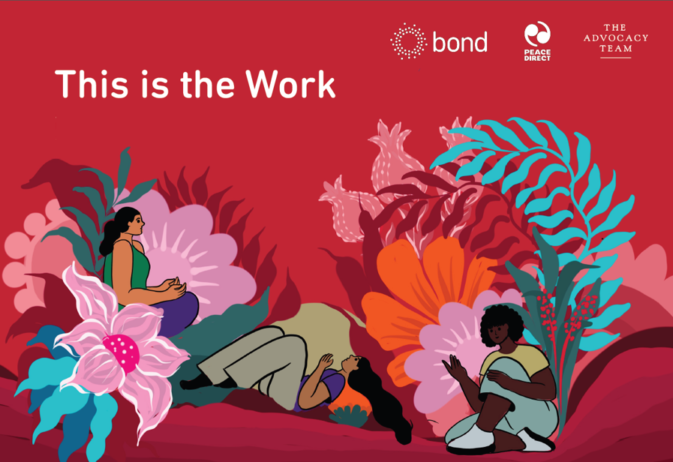What do the latest UK aid provisional statistics tell us?
Yesterday two sets of provisional data for 2021 were released: the UK’s Provisional Statistics on International Development and the OECD DAC Preliminary ODA Levels.
These statistics give us an insight into how the UK chose to spend its Official Development Assistance (ODA) in 2021. Here’s what we learned:
The overall cuts to UK aid were huge
Following the government’s decision to move away from the UK’s commitment to 0.7% of GNI and reduce it to just 0.5%, ODA spend was reduced to meet 0.5% of GNI in 2021 – a total of £11.5billion.
This is a reduction of £3billion compared to 2020. If the UK had kept to its manifesto promise to spend 0.7%, the ODA budget would have been £4.6billion bigger, totalling £16billion. Cutting the budget by this much with so little notice, including cuts to existing programmes, undermines value for money, reduces transparency and disproportionately harms the most marginalised communities.
The OECD data shows that the UK was an outlier in cutting ODA. Overall, ODA from all DAC countries increased by 4.4% in real terms. As you would expect with an increasing number of global crises, ODA rose in 23 of the 29 contributing countries. Eight countries spent more than 0.5% GNI on ODA, with five reaching or exceeding 0.7%.
Bilateral programmes were most impacted
Despite the government stating their intention to prioritise bilateral over multilateral funding, bilateral programmes saw greater cuts. Total UK ODA to bilateral programmes was cut by 25.7% (£2.5 billion) while support to multilateral programmes was cut by 10.8% (£535 million). Since 2019, the share to bilateral programmes has dropped from 68.6% to 61.6%.
Subscribe to our newsletter
Our weekly email newsletter, Network News, is an indispensable weekly digest of the latest updates on funding, jobs, resources, news and learning opportunities in the international development sector.
Get Network NewsOn a more positive note, the UK continues its practice of minimising the amount of ODA spent through loans. In 2021, the UK spent a grant-equivalent of US$281m through multilateral loans, US$920m through private sector instruments and the rest directly through grants.
Africa hit hardest
The amount of bilateral ODA going to all regions fell, but Africa lost out the most. In 2020 the region received 55.4% of the Foreign, Commonwealth and Development Office’s (FCDO) bilateral ODA, while in 2021 this fell to a share of 52.2%, representing a big cut of £864million (39%) compared to 2020.
Asia programming was cut by 32%, the Americas by 19% and Europe by 12%. This fall is likely due to the strategic shift to focus on the Indo-Pacific region and the fact that the cuts focused on the bigger bilateral programmes, many of which are in Africa. The disproportionate cuts to these regions are concerning given the high percentage of the world’s poor and conflict-affected populations that live there.
Also worrying is the large amount of FCDO bilateral spend being allocated as “non-region/country specific” amounting to 41.8% in 2021. While it is understandable that some programmes cannot be directly attributed to specific regions, this is a large percentage.
The more the amount in this category increases, the less we can understand the geographic spread and impact of the ODA portfolio, limiting transparency and accountability. The UK reports more under this category, and is increasing the amount faster than other key partners.
The OECD statistics also confirmed the UK counted US$141m (0.9% of its total ODA budget) towards sharing excess vaccine doses purchased for UK citizens. Sharing these already paid-for doses costs the UK next to nothing, and this $141m is effectively reimbursing our domestic budget for the vaccine doses, taking away provision of other support to those most in need.
The FCDO saw the biggest cuts, with the Home Office’s budget increasing
The FCDO spent 72.3% of the total ODA budget in 2021, a total of £8.3bn, down from 73.7% in 2020 and 77.7% in 2019. Meanwhile, and despite the cuts happening across the board, the Home Office budget increased by £318million compared to 2020, a 53% increase in amount and a 3.8% rise in percentage share. A large part of the Home Office ODA spend goes on refugee-hosting costs within the UK.
We can assume the increase to the Home Office is in part a response to the situation in Afghanistan, and likely to increase further in 2022 as the Ukraine crisis continues. In comparison, the OECD statistics tell us that the total amount across all DAC donors going towards domestic refugee costs saw little change compared to 2020, as other countries chose not to fund refugee costs through their ODA budgets. With an already-reduced ODA budget, any increase in the amount spent in the UK on in-donor refugee costs will mean further cuts in support to lower- and middle-income countries.
The Department for Business, Energy and Industrial strategy (BEIS) also saw an increase in its percentage share to 8.1% total ODA, likely reflecting the commitment to climate finance during COP26.
There is still so much more to know
These statistics don’t provide information on UK spend by sector, i.e. water and sanitation, health, women and girls. That will come in the final statistics in September, bar what we already know about the rises in spend by the Home Office and BEIS. With the recent commitment to restore funding to women and girls, information on how the UK has spent ODA across all elements of gender equality is also a key piece of information. Recent analysis from Development Initiatives and CARE International UK has found that the UK needs to increase spend by £1.6bn to meet this commitment.
While we can compare to actual spend in 2020, we do not know what was planned for 2021 and so cannot fully understand where the UK aid cuts fell across sectors, geographies and types of programming. Devex and Bond have tracked some of these cuts, while the NAO and ICAI have provided insight into how the process impacted programmes. Ultimately, the routine statistical releases cannot provide a full picture. Budgets need to be published, not just spend, to fully understand the consequences of the cut to 0.7%.
The final statistics in September will provide detail on the amount going to low- and middle-income countries. The Center for Global Development found that for 2020/21 the percentage of FCDO’s bilateral spend going to lower-income groups improved slightly, but that in 2021/22, the FCDO’s planned bilateral spend again sees a decline in poverty-focus. This means that not only have the UK’s aid cuts caused huge suffering for those living in poverty, but that the implementation of the cuts and the allocation of what remains have not prioritised those people most in need of ODA.
Category
News & Views



